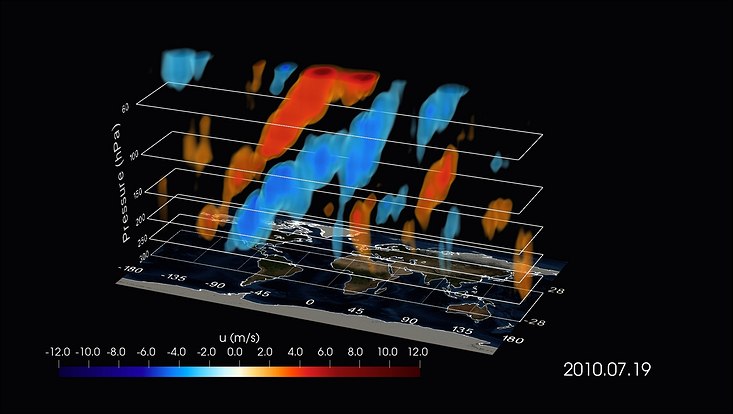and Society (CLICCS)
Trapped at the Equator, but with global impact
7 June 2021, by Stephanie Janssen

Photo: MODES/ UHH/CEN/F.Brisc
For the first time, the Kelvin waves of the Earth’s atmosphere have been visualized in all three spatial dimensions, in contrast to the usual two-dimensional fashion. One major characteristic of the Kelvin waves is that in the atmosphere – unlike in the ocean – they only exist near the Equator, where they are virtually trapped. They propagate to the east along the Equator and upward, as we can see in the figure. Though Kelvin waves have a major influence on the weather and climate around the globe, we still only partially understand them.
In response, Prof. Nedjeljka Žagar and her team developed their own software to filter the Kelvin waves and other equatorial waves. They used reanalysis data spanning 40 years to quantify Kelvin waves up to the highest levels of the stratosphere. As a result, these waves can now be more accurately validated in climate models, helping to refine projections. What we see here is the zonal wind speed from July 2010, a snapshot from an animation. The westerlies are shown in blue; the easterlies are in red, with speeds of up to 12 meters per hour. In the animation, a regular upward motion in the Kelvin waves can be clearly seen, reaching from the upper troposphere up to the stratosphere in a cycle that normally persists for 10 to 14 days.
CLICCS Quarterly
This article was published in the CLICCS Quarterly, in which the Cluster of Excellence presents current news from its climate research. Find full issue -> here.


